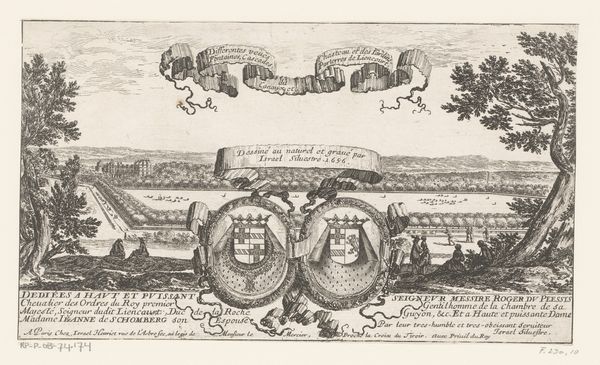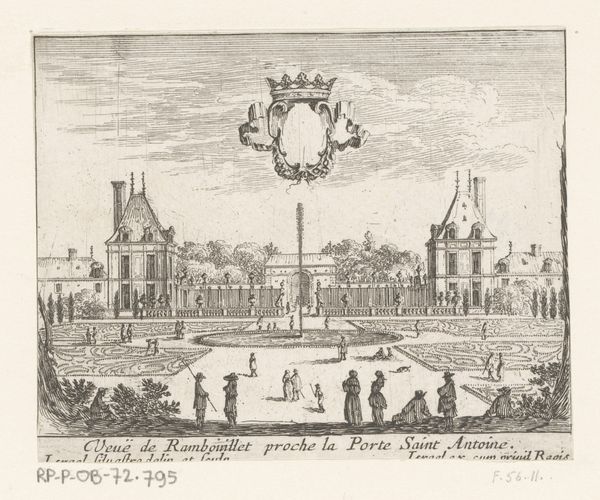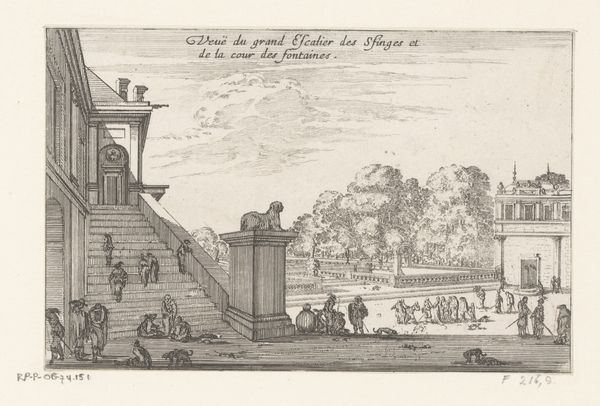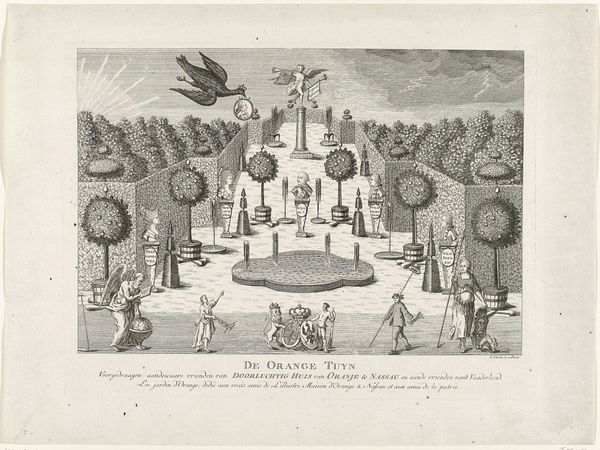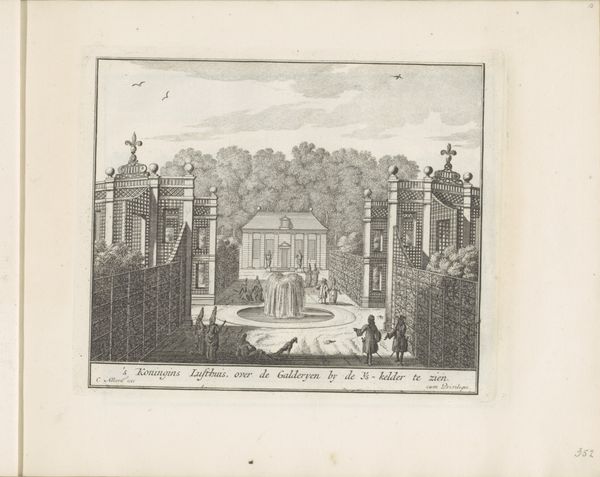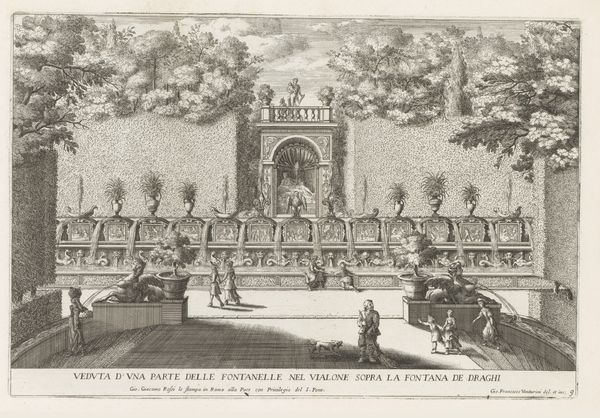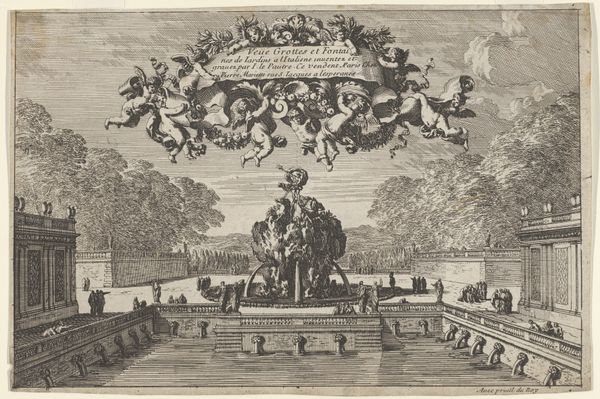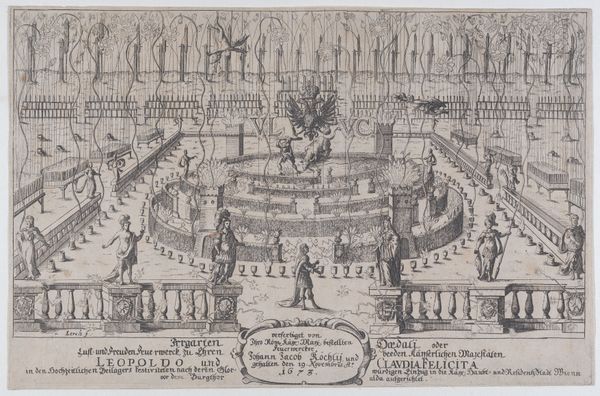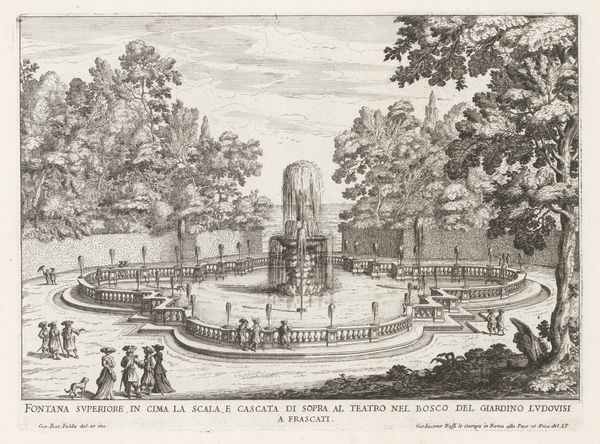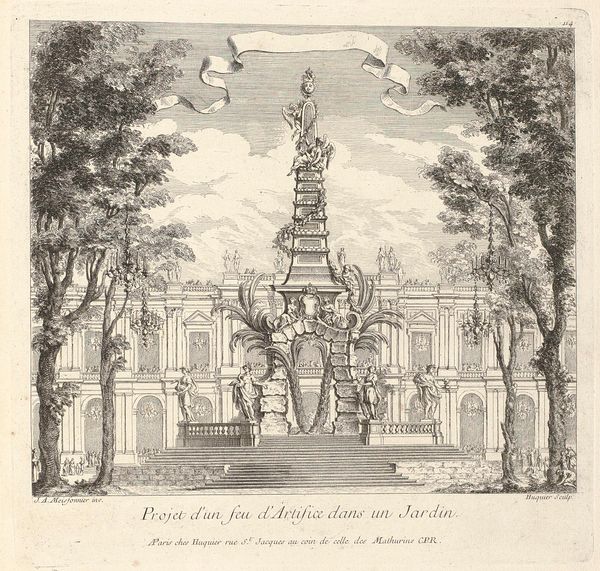
Titelprent met gezicht op het kasteel van Rochefoucauld 1631 - 1661
0:00
0:00
print, etching, engraving, architecture
#
baroque
# print
#
etching
#
landscape
#
cityscape
#
engraving
#
architecture
Dimensions: height 85 mm, width 106 mm
Copyright: Rijks Museum: Open Domain
Editor: Here we have "Titelprent met gezicht op het kasteel van Rochefoucauld," an etching and engraving by Israel Silvestre, dating from 1631 to 1661. It feels very orderly and composed. The castle is very symmetrical, with the garden mimicking its form. What stands out to you in terms of its formal elements? Curator: The engraving is certainly an intriguing study in spatial organization. The linear perspective, although present, seems almost secondary to the surface patterns created by the detailed etching. Note how the foreground, filled with meticulously rendered figures, functions almost as a stage setting, guiding the eye toward the centrally located castle. Editor: I hadn’t thought of it that way. It’s like a theater. Is that banner above also guiding the eye or does it function differently? Curator: Precisely. Consider the placement of the heraldic banner and inscription above. Its textured surface and elaborate design compete with the building itself, challenging a clear hierarchy of pictorial elements. We might say that the work refuses a single, dominant focal point, distributing visual interest across the entire picture plane. Editor: That’s fascinating! So, it’s less about the actual castle and more about the relationships between the shapes and lines? Curator: Indeed. Disregarding historical context or iconographic intent, the engraving presents itself as an intricate arrangement of forms, lines, and textures. The balance, or perhaps the deliberate imbalance, of these elements becomes the primary subject of our contemplation. Editor: That really changes how I see it. I was focused on what it depicted, rather than how it was constructed. Curator: And that distinction highlights the essence of formalist analysis – appreciating art for its inherent visual language. It is important to note how our perspective shapes meaning. Editor: This has definitely given me a new framework for looking at art. Thank you!
Comments
No comments
Be the first to comment and join the conversation on the ultimate creative platform.


